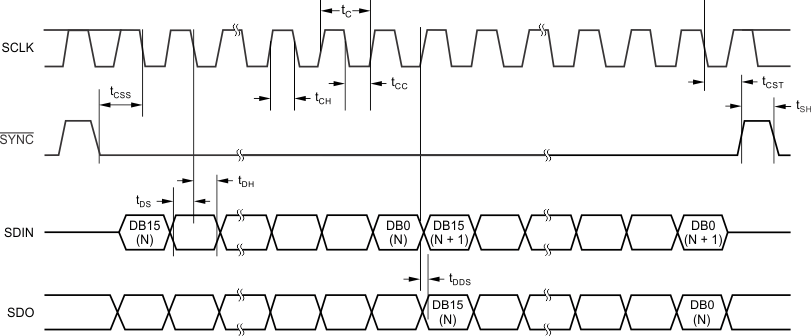JAJSEY9E April 2005 – March 2018 DAC7811
PRODUCTION DATA.
7.4.4 Daisy-Chain
The DAC7811 powers up in the daisy-chain mode which must be used when two or more devices are connected in tandem. The SCLK and SYNC signals are shared across all devices while the SDO output of the first device connects to the SDIN input of the following device, and so forth. In this configuration 16 SCLK cycles for each DAC7811 in the chain are required. Please refer to the timing diagram of Figure 27.
For n devices in a daisy-chain configuration, 16n SCLK cycles are required to shift in the entire input data stream. After 16n active SCLK edges are received following a falling SYNC, the data stream becomes complete, and SYNC can brought high to update n devices simultaneously.
When SYNC is brought high, each device will execute the function defined by the four DAC control bits C3-C0 in its input shift register. For example, C3-C0 must be 0001 for each DAC in the chain that is to be updated with new data, and C3-C0 must be 0000 for each DAC in the chain whose contents are to remain unchanged.
A continuous stream containing the exact number of SCLK cycles may be sent first while the SYNC signal is held low, and then raise SYNC at a later time. Nothing happens until the rising edge of SYNC, and then each DAC7811 in the chain will execute the function defined by the four DAC control bits C3-C0 in its input shift register.
